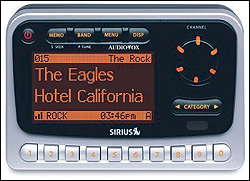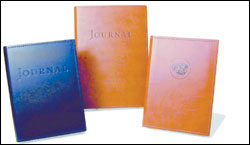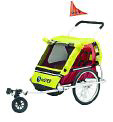A half billion dollars for Howard Stern’s services starting in 2006. A cool $650 million to Major League Baseball for 11 years of broadcasting rights. We’ve gotta be talking about the deepest pockets of major-major media conglomerates, right? No, actually, we’re talking satellite radio, a relatively new form of independent, subscription-based entertainment that, according to a recent issue of BusinessWeek, has yet to show a profit and isn’t finished burning through hundreds of millions of dollars of venture capital.
But who’s worried? Not the automobile manufacturers that own tiny pieces of rivals XM Satellite Radio and Sirius Satellite Radio. More and more new cars are being outfitted with the pioneering radio technology, a streamlined alternative to the somewhat clunky adapters that older cars require to get satellite reception. With almost 60 percent of new car owners paying monthly subscription fees ($10 for XM’s services, $13 for Sirius; long-term rates are cheaper), the trend is in satellite radio’s favor.
Then there is the increasing army of home listeners. Analysts think Sirius’ deal with Stern (who is eager to break free of terrestrial radio’s FCC constraints, which don’t extend to the satellite domain) and XM’s expensive contract with baseball represent peak investments for both companies. In other words, both XM and Sirius anticipate a huge surge in subscriptions as fans of the shock jock and America’s pastime sign up. (If you’re not a fan of either, each company offers approximately 120 other stations to tune in.) Satellite radio is probably here to stay.
What’s the big deal about satellite radio? Well, it offers great reception, lots of niche music, talk radio, and special interests (comedy, kids, sports), and transmits text information such as game scores and stock prices. Signals don’t emanate from radio towers on the ground but from satellites above. Not only is reception typically sharp and clear, wherever you go in the continental United States you can listen to the same static- and commercial-free programs. You don’t have to abandon all your old favorites from the FM dial: National Public Radio, ESPN, and BBC World radio, among others, all have satellite channels, too.
A quick look at XM’s roster of shows (www.xmsatelliteradio.com) and that of Sirius (www.siriusradio.com) reveals a tantalizing penchant for customized programming. Sirius offers Elvis Radio (all day and night with the King), Jam ON (Phish, the Dead, other jam bands), Shade 45 (created by Eminem), and multiple stations for classical, jazz, and world music. Fans of chatter have Sirius Right (conservative) and Sirius Left (liberal), OutQ (gay and lesbian), even Sirius Trucking Network (yup, news and info for truckers). Entertainment includes Raw Dog (uncensored comedy), RadioClassics (Golden Age shows), and brand radio (Disney, Court TV, Maxim without the babes).
The funkier XM has tuneful showcases with names like Music Lab (progressive rock), Fungus (punk, ska, surf), Watercolors (cool jazz), and Frank’s Place (Sinatra and friends). Other good things include Laugh USA (nonblue comedy), XM Kids (ages 2 to 8), and the Power (African-American talk). CNN, VH1, and the Discovery Channel serve up original radio programming.
Making the satellite leap means purchasing some gear, most importantly the radio, or receiver. These operate like ordinary radios except their LED displays tell you what you’re listening to and, depending on the machine, can run a text stream of stocks and scores while you’re tuned in. XM’s TuneSelect and Sirius’ S-Seek technologies allow you, on some receivers, to program searches for specific songs. If one of those songs is playing on one station while you’re listening to another, the radio beeps and you can switch over with the press of a button.
Car options include XM’s Roady 2 ($130) and Sirius’ Blaupunkt America SR04 ($150). Both are small, attach to a dashboard, get their juice from the car’s cigarette lighter, and adapt your audio cassette player into a medium for getting satellite signals to the speakers. A thin wire leading to a small antenna is connected to the front or rear window; use the receiver for finding stations you want. If you don’t like this arrangement (requiring some clutter), you can replace your existing radio with the self-contained XM Commander ($170 plus installation fees).
Home receivers include the XM SkyFi and Audiovox SIR-PNP2 for Sirius, each $100. Dedicated stereo rack-mount receivers, designed to blend into home entertainment systems, run about $250. Boombox add-ons exist for both XM and Sirius (around $100); attach your receiver to a pair of big old speakers, add batteries, and go annoy people at the beach. The XM PCR ($95) allows you to listen through your PC’s speakers.
More and more receiver options, including handheld units about the size of an iPod, are becoming available. Check product catalogs at both the XM and Sirius Web sites, or visit electronics stores, for more information.








